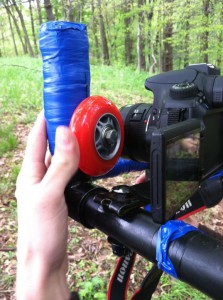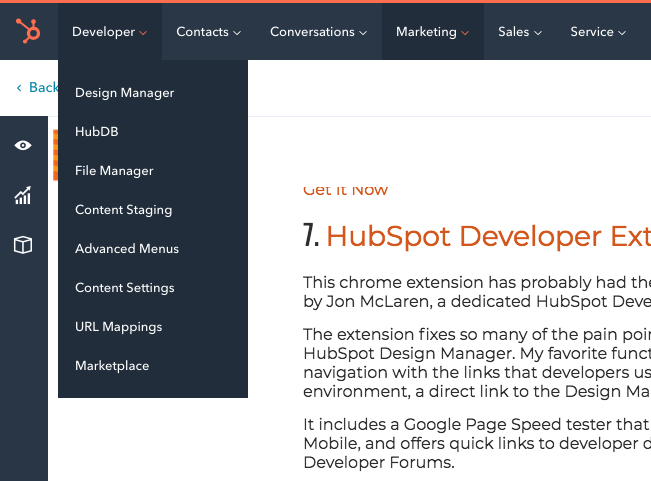“Necessity is the mother of invention.”
I’m sure you've probably heard this phrase at one time or another, but in the land of media production, this English proverb rings true on an almost daily occurrence.
I cannot tell you how delighted I would be to have every piece of cutting edge media production equipment known to man available to my team. Unfortunately, this is a very expensive endeavor. The massive media production budgets boasted by Hollywood producers actually make a lot of sense once you start looking at the cost of a basic shoulder rig or follow focus.
Luckily, these massive price tags don’t need to dampen your media production ambitions. In fact, the necessity for certain equipment that is far out of your price range is a huge opportunity for you to innovate and discover new capabilities you never thought were possible.
In my last post, I covered a high-level overview of media production tips, tricks, and hacks. In this post, I will focus on 3 media production hacks that will save you money, increase your understanding and familiarity with certain production processes, and increase the quality of your future projects.
These media production hacks we're developed and perfected during my time with the exceptional team at CreMedia productions, spearheaded by one of the most talented artists I've ever had the pleasure of working alongside, Max Rodriguez, my friend and mentor.
Set your video strategy apart from the rest with these 3 Basic Mindsets of Video Content Programming
3 Media Production Hacks
The “PVC” Shoulder Rig
Camera stabilization is an aspect of media production that is of huge importance and should never be overlooked. Anyone who has tried to shoot handheld on a DSLR knows that this factor alone could make your indie film look like a home movie.
The industry solution – Buy a shoulder stabilization rig that will run you around $500 - $2,500+
The video guru solution – Make a shoulder rig out of PVC pipe and super glue that will run you around $40 and can be completed in under an hour
I’ve had RedRock Micro shoulder rigs break on a number of occasions and it’s always right at a joint, making the equipment unusable. I’ve made a handful of PVC rigs and not one of them has ever broken. I will even add sand or metal inside the pipes for additional weight. This is a very affordable solution for handheld stabilization that is easy to implement in your next media production.
The “Scooter Wheel” Follow Focus
 Photo by Rachel O'Donnell on the set of the Army ROTC Promotional video for Ohio University - produced by CreMedia Productions
Photo by Rachel O'Donnell on the set of the Army ROTC Promotional video for Ohio University - produced by CreMedia ProductionsA follow focus is a focus control mechanism used with professional video cameras. It helps the operator be more efficient and precise when it comes to “pulling” or racking focus. The way it works is using a set of gears, the control dial is turned which turns the focus ring on the lens, making this process easier and more accurate. Tighter rack focusing can dramatically enhance the quality of your next media production.
The industry solution – Buy a follow focus with gears that will run you around $1000 - $5,000+
The video guru solution – Make a follow focus out of a scooter wheel screwed into your PVC shoulder rig. This will run you around $30 and take less than 30 minutes.
The scooter wheel is actually surprisingly accurate and versatile between different lenses. The rubber of the wheel grips the focus ring and can provide an attractive amount of user control. There are certain functions that the scooter wheel is lacking (a whip extension for example) but for the price, this solution cannot be beaten for even a mid-range media production budget.
The “Skateboard” Slider
 Photo of Max Rodriguez operating the skateboard slider by Rachel O'Donnell on the set of Jean P's "Amir's Song" produced by CreMedia Productions
Photo of Max Rodriguez operating the skateboard slider by Rachel O'Donnell on the set of Jean P's "Amir's Song" produced by CreMedia ProductionsA slider track is a small piece of equipment that that can produce a stunning result if used correctly. A slider will add steady fluid motion to a shot with minimal operational movement from the camera operator. Imagine a 2 foot long dolly track that you use to slide your camera back and forth. This is an imperative piece of equipment for any professional shoot.
The industry solution – Buy a professional slider that will run you around $150 - $5,000+
The video guru solution – Grab a skateboard for around $20-$30 and set your camera on it
This solution provides the same “look” as a professional slider and is sometimes even more versatile. Even having a professional slider in our media production kit, I still like to keep a skateboard in my trunk for the right situation.
Have you ever used any of these media production hacks? If so, how did they work for you? Have some hacks of your own? Share them with us in the comments below!



-1.png)
